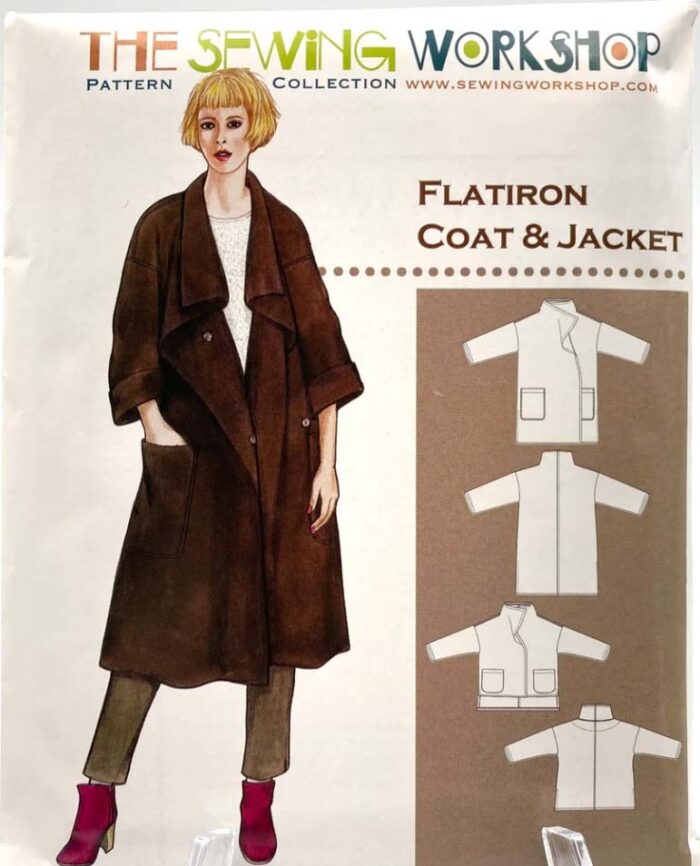Finishes for Exposed Seams and Fabric That Frays

While I was shopping for notions at my local Joann Fabric and Crafts store, the fabric department called to me. I strolled over and discovered a fabric with a herringbone weave. The tan and black yardage was different from anything I had ever seen there. I ran my fingers over it, put it back, and decided to leave it at the store. It entered my dreams that night, and the next morning I went back to see if someone else had purchased it. It was still there waiting for me.
A dreamy fabric
The fabric, a heavy cotton, looked the same on both sides. It was only 45 inches wide, but there were almost 4 yards of it. I knew I could shorten the pattern for the jacket I wanted to make with the fabric.
The pattern I had in mind was the Sewing Workshop Flatiron Coat and Jacket. I love its style lines, collar, sleeves—everything about it. The coat is an unlined design that requires fabrics with two good sides. My newfound fabric was nearly perfect for it.
Due to the fabric’s width, I needed to arrange it carefully on my cutting table. I folded right sides together widthwise with selvages along both sides so that the wide pattern pieces would fit correctly. After cutting out and assembling, I noticed the fabric frayed a lot. That presented me with the challenge of choosing a seam finish that would create a clean look.
Choosing a seam finish
The coat’s draped collar has a center-back seam that would show the fabric’s wrong side when the coat is worn. I could have sewn it and serge-finished it but chose a flat-felled seam instead. Call it an executive decision to use a 3/4-inch seam allowance there and at the coat’s center-back seam. Since…
Start your 14-day FREE trial to access this story.
Start your FREE trial today and get instant access to this article plus access to all Threads Insider content.
Start Your Free TrialAlready an Insider? Log in



































Log in or become a member to post a comment.
Sign up Log in